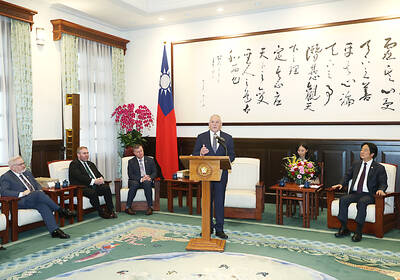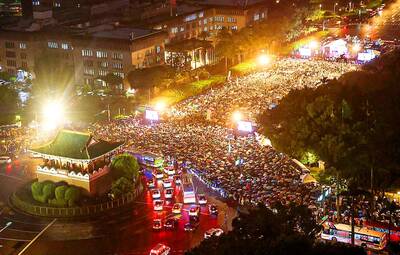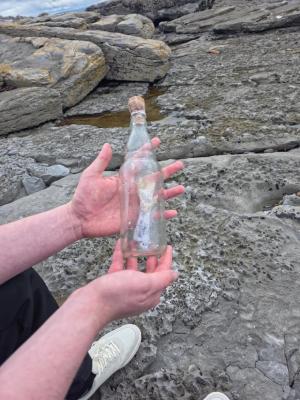Native-language interest groups yesterday urged the Ministry of Education to speed up the creation of a unified phonetic system for the Hoklo language (commonly known as Taiwanese) to preserve Taiwanese culture.
Lee Shang-hsien (
At the moment, Hoklo text books use either Tongyong pinyin, the Hanyu Romanization system, or the Taiwanese Language Phonetic Alphabet (TLPA).
Lee said that the three systems did not reflect regional Hoklo accents, and added that the Hoklo language could not be preserved and passed on to the next generation without a unified phonetic system.
Language teacher Su Huang-hung (
Using the Tongyong pinyin system reduces Hoklo to only five tones, Su said.
In addition, Hoklo pronunciation changes according to syntactic context, she added.
However, Tongyong pinyin marks these cases as variant pronunciations, creating a situation in which many students do not know the original pronunciation of the words they study, Su said.
Hanyu pinyin and the TLPA are almost entirely identical, since the TLPA system was derived from Hanyu pinyin by the Ministry of Education many years ago, said Lu Ching-ching (
Lu said there were similarities among the three systems, and that all three have advantages and disadvantages.
The committee's main problem was to reach a consensus and decide on one system or to incorporate the three systems into one, she said.
Discussions are still taking place at the ministry on unifying the phonetic system, Lu added.
Huang Yu-chi (
Other representatives said that not only students, but also foreigners and foreign spouses need to learn Hoklo and are in need of a unified system.

‘NON-RED’: Taiwan and Ireland should work together to foster a values-driven, democratic economic system, leveraging their complementary industries, Lai said President William Lai (賴清德) yesterday expressed hopes for closer ties between Taiwan and Ireland, and that both countries could collaborate to create a values-driven, democracy-centered economic system. He made the remarks while meeting with an Irish cross-party parliamentary delegation visiting Taiwan. The delegation, led by John McGuinness, deputy speaker of the Irish house of representatives, known as the Dail, includes Irish lawmakers Malcolm Byrne, Barry Ward, Ken O’Flynn and Teresa Costello. McGuinness, who chairs the Ireland-Taiwan Parliamentary Friendship Association, is a friend of Taiwan, and under his leadership, the association’s influence has grown over the past few years, Lai said. Ireland is

FINAL COUNTDOWN: About 50,000 attended a pro-recall rally yesterday, while the KMT and the TPP plan to rally against the recall votes today Democracy activists, together with arts and education representatives, yesterday organized a motorcade, while thousands gathered on Ketagalan Boulevard in Taipei in the evening in support of tomorrow’s recall votes. Recall votes for 24 Chinese Nationalist Party (KMT) lawmakers and suspended Hsinchu City mayor Ann Kao (高虹安) are to be held tomorrow, while recall votes for seven other KMT lawmakers are scheduled for Aug. 23. The afternoon motorcade was led by the Spring Breeze Culture and Arts Foundation, the Tyzen Hsiao Foundation and the Friends of Lee Teng-hui Association, and was joined by delegates from the Taiwan Statebuilding Party and the Taiwan Solidarity

A saleswoman, surnamed Chen (陳), earlier this month was handed an 18-month prison term for embezzling more than 2,000 pairs of shoes while working at a department store in Tainan. The Tainan District Court convicted Chen of embezzlement in a ruling on July 7, sentencing her to prison for illegally profiting NT$7.32 million (US$248,929) at the expense of her employer. Chen was also given the opportunity to reach a financial settlement, but she declined. Chen was responsible for the sales counter of Nike shoes at Tainan’s Shinkong Mitsukoshi Zhongshan branch, where she had been employed since October 2019. She had previously worked

An SOS message in a bottle has been found in Ireland that is believed to have come from the Taiwanese captain of fishing vessel Yong Yu Sing No. 18 (永裕興18號), who has been missing without a trace for over four years, along with nine Indonesian crew members. The vessel, registered to Suao (蘇澳), went missing near Hawaii on Dec. 30, 2020. The ship has since been recovered, but the 10 crew members have never been found. The captain, surnamed Lee (李), is believed to have signed the note with his name. A post appeared on Reddit on Tuesday after a man